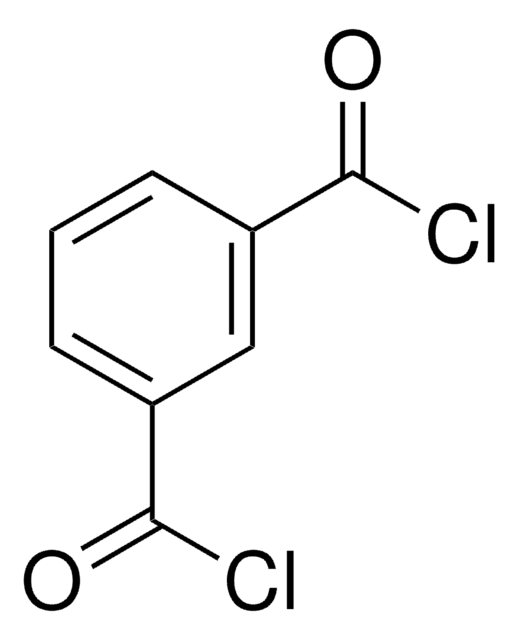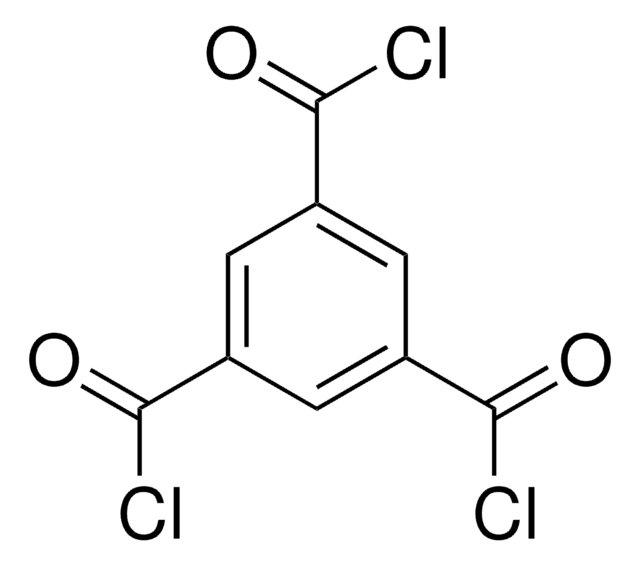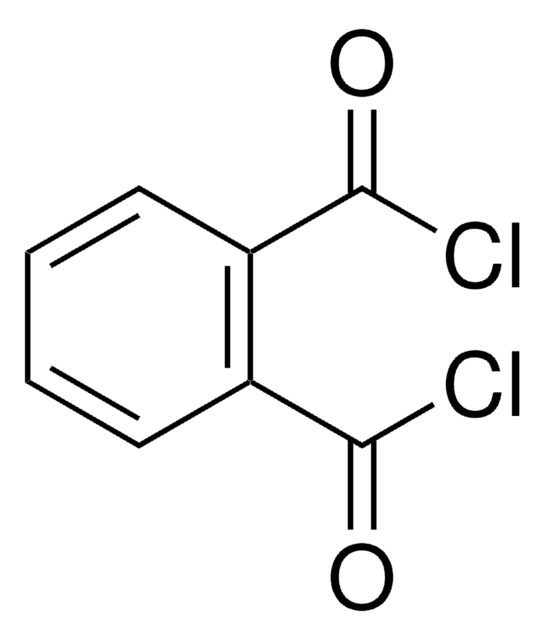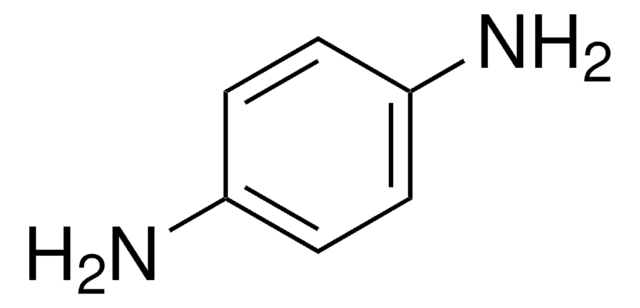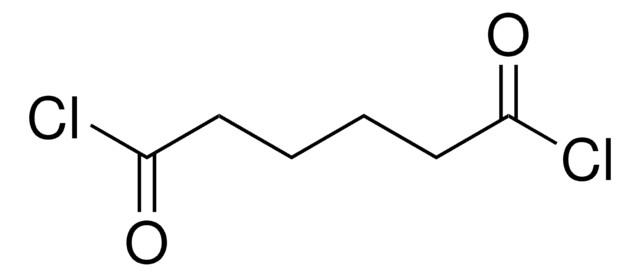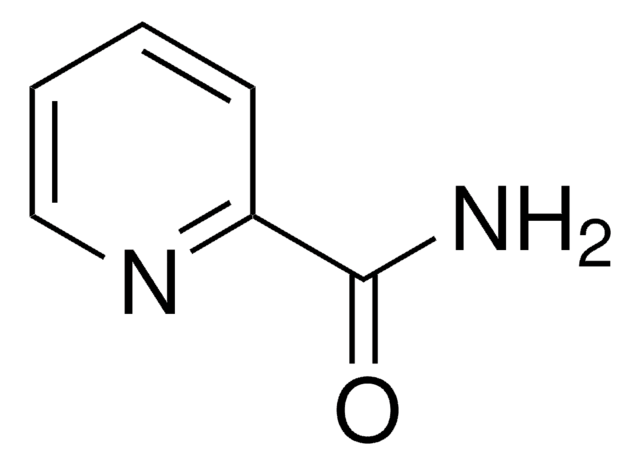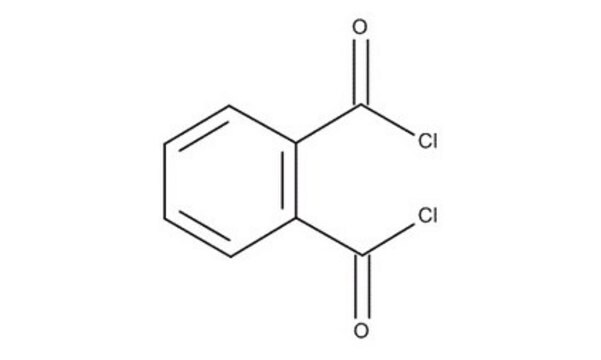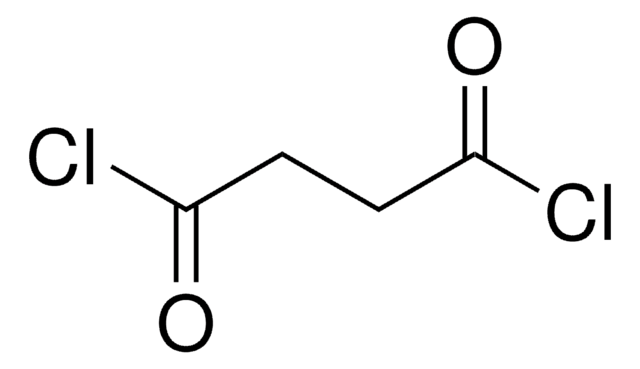Wichtige Dokumente
120871
Terephthaloylchlorid
≥99%, flakes
Synonym(e):
Terephthalic acid chloride, Terephthaloyl dichloride
About This Item
Empfohlene Produkte
Dampfdichte
7 (vs air)
Qualitätsniveau
Dampfdruck
0.02 mmHg ( 25 °C)
Assay
≥99%
Form
flakes
bp
266 °C (lit.)
mp (Schmelzpunkt)
79-81 °C (lit.)
Löslichkeit
ethanol: soluble 100 mg/mL, clear, colorless
Funktionelle Gruppe
acyl chloride
SMILES String
ClC(=O)c1ccc(cc1)C(Cl)=O
InChI
1S/C8H4Cl2O2/c9-7(11)5-1-2-6(4-3-5)8(10)12/h1-4H
InChIKey
LXEJRKJRKIFVNY-UHFFFAOYSA-N
Suchen Sie nach ähnlichen Produkten? Aufrufen Leitfaden zum Produktvergleich
Verwandte Kategorien
Allgemeine Beschreibung
Anwendung
Rechtliche Hinweise
Signalwort
Danger
H-Sätze
Gefahreneinstufungen
Acute Tox. 3 Inhalation - Eye Dam. 1 - Skin Corr. 1A - STOT SE 3
Zielorgane
Respiratory system
Lagerklassenschlüssel
6.1A - Combustible acute toxic Cat. 1 and 2 / very toxic hazardous materials
WGK
WGK 1
Flammpunkt (°F)
356.0 °F - closed cup
Flammpunkt (°C)
180 °C - closed cup
Persönliche Schutzausrüstung
Eyeshields, Faceshields, Gloves, type P3 (EN 143) respirator cartridges
Hier finden Sie alle aktuellen Versionen:
Besitzen Sie dieses Produkt bereits?
In der Dokumentenbibliothek finden Sie die Dokumentation zu den Produkten, die Sie kürzlich erworben haben.
Kunden haben sich ebenfalls angesehen
Artikel
Molecular Layer Deposition of Organic and Hybrid Organic-Inorganic Polymers
Unser Team von Wissenschaftlern verfügt über Erfahrung in allen Forschungsbereichen einschließlich Life Science, Materialwissenschaften, chemischer Synthese, Chromatographie, Analytik und vielen mehr..
Setzen Sie sich mit dem technischen Dienst in Verbindung.